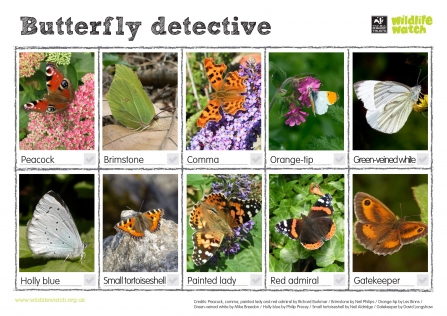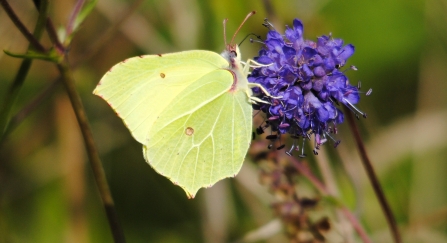
© Amy Lewis
The distinctive lime-green yellow of a brimstone butterfly is an unmistakable sign of spring arriving as it's one of the first butterflies to take to the wing. However, the brimstone is also one of the longest living butterflies and can be spotted all through the summer months. It is commonly spotted in gardens, woodland and parks.
Statistics
Wingspan: 6.0-7.4cm
Conservation status
Common
When to see
January to December
Where to see
Grebe House Wildlife Garden, Cassiobury Park
Peacock
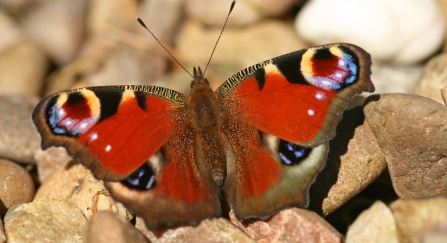
(c) Rachel Scopes
With their unmistakable markings and beautiful colouring, the peacock butterfly can be found in gardens where it feeds on buddleia and other flowers. It ranges far, however, and can also be found in the shelter of woodland rides and clearings. The caterpillars feed on common nettles. The "eyes" on the wings of a peacock butterfly not only resemble the feathers of the bird it's named after but also act as a defence mechanism to deter predators.
Statistics
Wingspan: 6.3-7.5cm
Conservation status
Common
When to see
January to December
Where to see
Grebe House Wildlife Garden, Alpine Meadow
Small heath
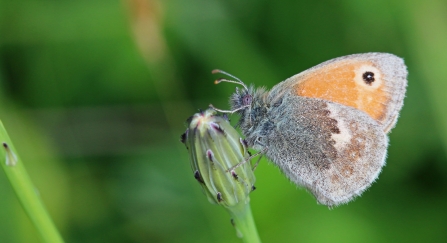
(c) Wendy Carter
If the sun is shining, this small innocuous butterfly takes to the air, and will be found resting close to the ground. It can be found in a variety of habitats but prefers the sparse, fine grasses found on heaths, moors and grassland.
Statistics
Wingspan: 3.3-3.7cm
Conservation status
Priority Species under the UK Post-2010 Biodiversity Framework
When to see
April to September
Where to see
Aldbury Nowers, Hertford Heath
White admiral
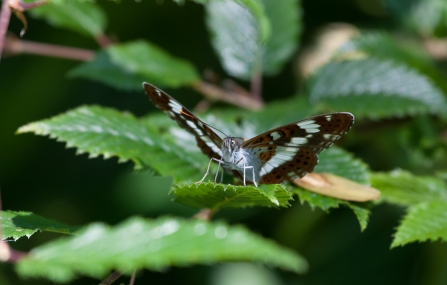
(c) Jenny Sherwen
The delicate gliding flight of this large butterfly is a wonder to behold. Usually found in shady woodland with sunny glades, its favourite food plant is bramble. The caterpillar of the white admiral feeds solely on honeysuckle, making the creation of sunny woodland rides and glades essential for honeysuckle to grow and for the white admiral to thrive.
Statistics
Wingspan: 5.6-6.6cm
Conservation status
Priority Species under the UK Post-2010 Biodiversity Framework
When to see
June to August
Where to see
Balls Wood, Danemead
Grizzled skipper
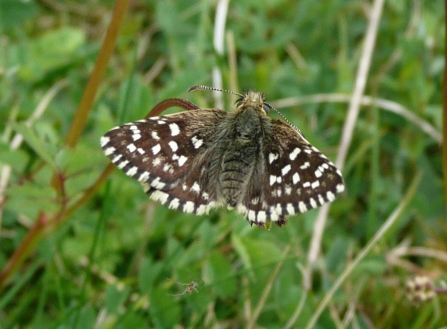
Grizzled skipper © Andrew Kerr
From mid-April onwards, rare grizzled skipper butterflies can be found flying close to their main larval food plant, wild strawberry or roosting on the seed heads of last year’s St John’s wort. Like most skippers, the grizzled skipper is extremely difficult to follow when in flight, but will stop to feed from various nectar sources, and is easiest to see in the early morning when it basks on bare ground in the sunshine.
Statistics
Wingspan: 2.3-2.9cm
Conservation status
Priority Species under the UK Post-2010 Biodiversity Framework
When to see
April to August
Where to see
Waterford Heath
Chalkhill blue
Chalkhill blue (c) Paul Thrush
In later summer, clouds of chalkhill blue butterflies can be found fluttering around low-lying grassland flowers. The larval foodplant is horseshoe vetch and the adults often feed on knapweed and scabious. Apart from the very rare large blue, the chalkhill blue is the largest of the blue butterflies.
Statistics
Wingspan: 3.3-4.0cm
Conservation status
Protected in the UK under the Wildlife and Countryside Act, 1981
When to see
July to September
Where to see
Hexton Chalk Pit
Spot this!
Download the spotter sheet below and see which ones you can find on your next walk!
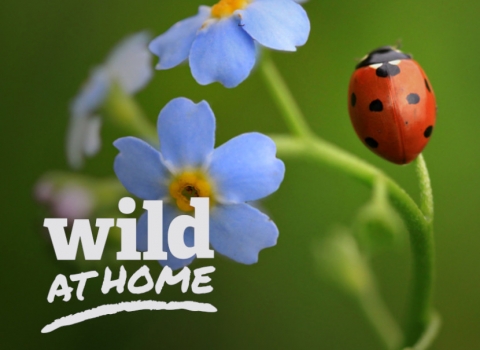
Wild At Home
We want to help everyone enjoy wildlife and connect with the wild places around them. Our #WildAtHome project aims to help bring you closer to wildlife in the safety of your home. Each week we'll be sending you ideas and inspiration on how to stay wild whilst remaining safe at home.


